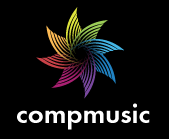TIME-DELAYED MELODY SURFACES FOR RĀGA RECOGNITION
This is a companion page for:
Article
Gulati, S., Serrà, J., Ganguli, K. K., ¸Sentürk, S., & Serra, X. (2016). Time-delayed melody surfaces for raga recognition. In Proceedings of the 17th International Society for Music Information Retrieval Conference (ISMIR), pp. 751–757. New York, USA.
[Postprint manuscript (PDF)]
Abstract
Rāga is the melodic framework of Indian art music. It is a core concept used in composition, performance, organization, and pedagogy. Automatic rāga recognition is thus a fundamental information retrieval task in Indian art music. In this paper, we propose the time-delayed melody surface (TDMS), a novel feature based on delay coordinates that captures the melodic outline of a rāga. A TDMS describes both the tonal and the temporal characteristics of a melody, using only an estimation of the predominant pitch. Considering a simple k-nearest neighbor classifier, TDMSs outperform the state-of-the-art for rāga recognition by a large margin. We obtain 98% accuracy on a Hindustani music dataset of 300 recordings and 30 rāgas, and 87% accuracy on a Carnatic music dataset of 480 recordings and 40 rāgas. TDMSs are simple to implement, fast to compute, and have a musically meaningful interpretation. Since the concepts and formulation behind the TDMS are generic and widely applicable, we envision its usage in other music traditions beyond Indian art music.
Code
The code used in this study can be found here. Experiment specific wrapper script can be found here.
Dataset
The dataset used in this study can be found here.


